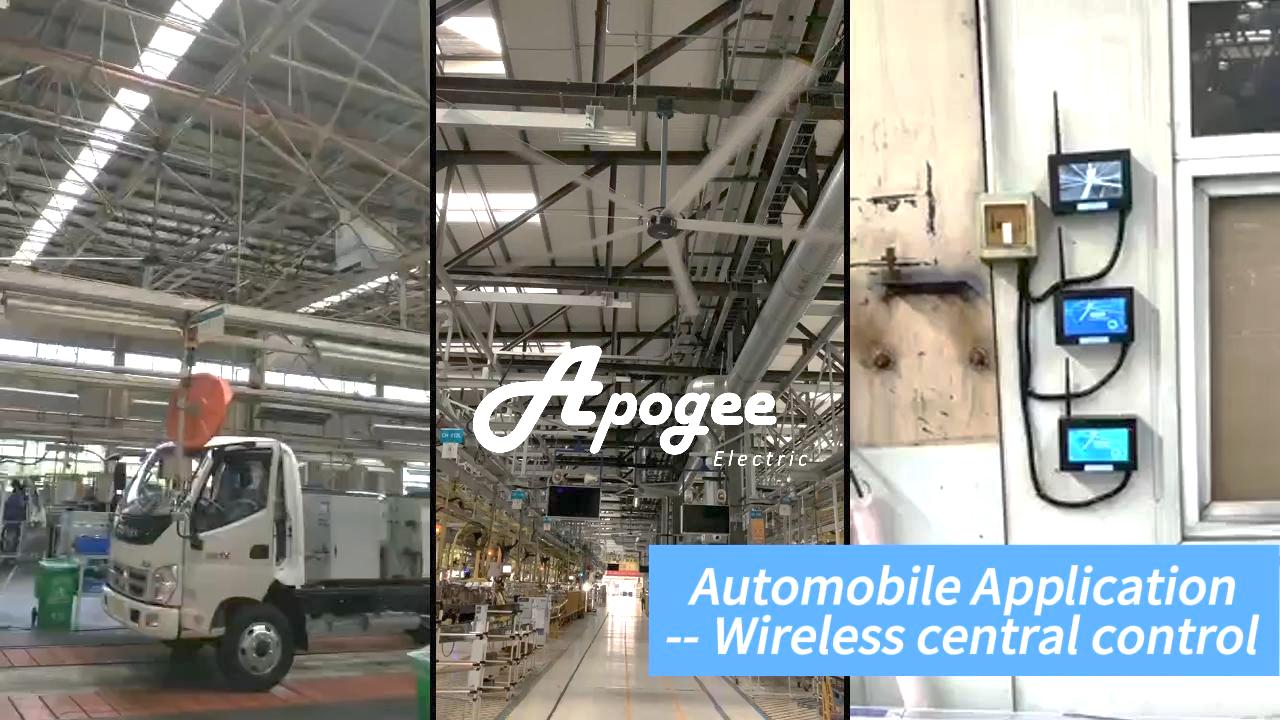Automotive assembly lines face extreme heat challenges: welding stations generate 2,000°F+, paint booths require precise airflow, and massive facilities waste millions on inefficient cooling. Discover how HVLS fans solve these problems – reducing energy costs by up to 40% while keeping workers productive.
Critical Challenges HVLS Fans Solve in Auto Plants:
- Heat Accumulation
Engine testing zones & foundries create dangerous ambient temperatures
HVLS solution: Destratify heat trapped at ceiling level
- Paint Booth Airflow Issues
Inconsistent airflow causes contamination risks
HVLS benefit: Gentle, uniform air movement eliminates dust settlement
- Energy Waste
Radiational HVAC costs $3–$5/sq ft annually in large facilities
Data point: Ford Michigan plant saved $280k/year with HVLS retrofit
- Worker Fatigue & Safety
OSHA studies show 30% productivity drop at 85°F+
HVLS impact: 8–15°F perceived temperature reduction
- Ventilation Deficiencies
Fumes from welding/coating stations require constant air exchange
How HVLS helps: Create horizontal airflow toward exhaust systems
How do HVLS fans solve these predicaments:
Combating Heat & Humidity:
- Destratification: HVLS fans gently mix the air column, breaking up hot air layers that naturally rise to the ceiling (often 15-30+ feet high). This brings down trapped heat and evenly distributes cooler air near the floor, reducing radiant heat load on workers and machinery.
- Evaporative Cooling: The constant, gentle breeze over workers’ skin significantly increases evaporative cooling, making them feel 5-10°F (3-6°C) cooler even without lowering the actual air temperature. This is crucial in areas like body shops (welding), paint shops (ovens), and foundries.
Improving Air Quality & Ventilation:
- Dust & Fume Dispersal: Constant air movement prevents welding fumes, grinding dust, paint overspray, and exhaust fumes from concentrating in specific areas. Fans help move these contaminants towards extraction points (like roof vents or dedicated systems) for removal.
Significant Energy Savings:
- Reduced HVAC Load: By destratifying heat and creating effective evaporative cooling, the demand for traditional air conditioning is significantly reduced, especially during warmer months. Fans can often allow thermostats to be set 3-5°F higher while maintaining the same comfort level.
- Reduced Heating Costs (Winter): In colder months, destratification brings warm air trapped at the ceiling down to the working level. This allows heating systems to work less hard to maintain comfort at floor level, potentially reducing heating energy use by 20% or more.
Enhancing Worker Comfort, Safety & Productivity:
- Reduced Heat Stress: The core benefit. By making workers feel significantly cooler, HVLS fans drastically reduce heat-related fatigue, dizziness, and illness. This leads to fewer safety incidents and errors.
Actual case: Painting Workshop – Solving problems of high temperature, paint mist retention and energy consumption
The automobile factory, the workshop is 12 meters high. The temperature in the baking oven area reaches over 45° C. The spray-painting station requires constant temperature and humidity. However, traditional air conditioners cannot cover the large space. Workers often have low efficiency due to the stuffiness and heat, and the accumulation of paint mist also affects the quality.
HVLS solution
Install four HVLS fans with a diameter of 7.3 meters above the outlet of the baking oven (covering approximately 2,000 square meters).
The fan operates at a low speed of 50 RPM, forming a vertical downward airflow barrier.
Direct effect
Cooling and efficiency enhancement
Hot air is pressed towards the ground for mixing, and the temperature in the working area drops from 45°C to 38°C.
In combination with the evaporative cooling effect of the fan, the workers’ perceived temperature drops by another 6°C, and their rest time is reduced by 40%.
Paint mist control
The airflow guides the paint mist to flow downward, preventing it from being suspended at the breathing height, while simultaneously pushing the pollutants towards the exhaust systems on both sides of the workshop.
The problem of paint surface particle adhesion has been reduced by 30%, and the rework rate has dropped.
Energy conservation
In summer, when the air conditioning setting temperature is raised by 5-8°C, the cooling energy consumption is saved by 35% (annual electricity bill savings exceed $15,000).
If you have HVLS Fans inquiry, please contact us through WhatsApp: +86 15895422983.
Post time: Aug-04-2025








